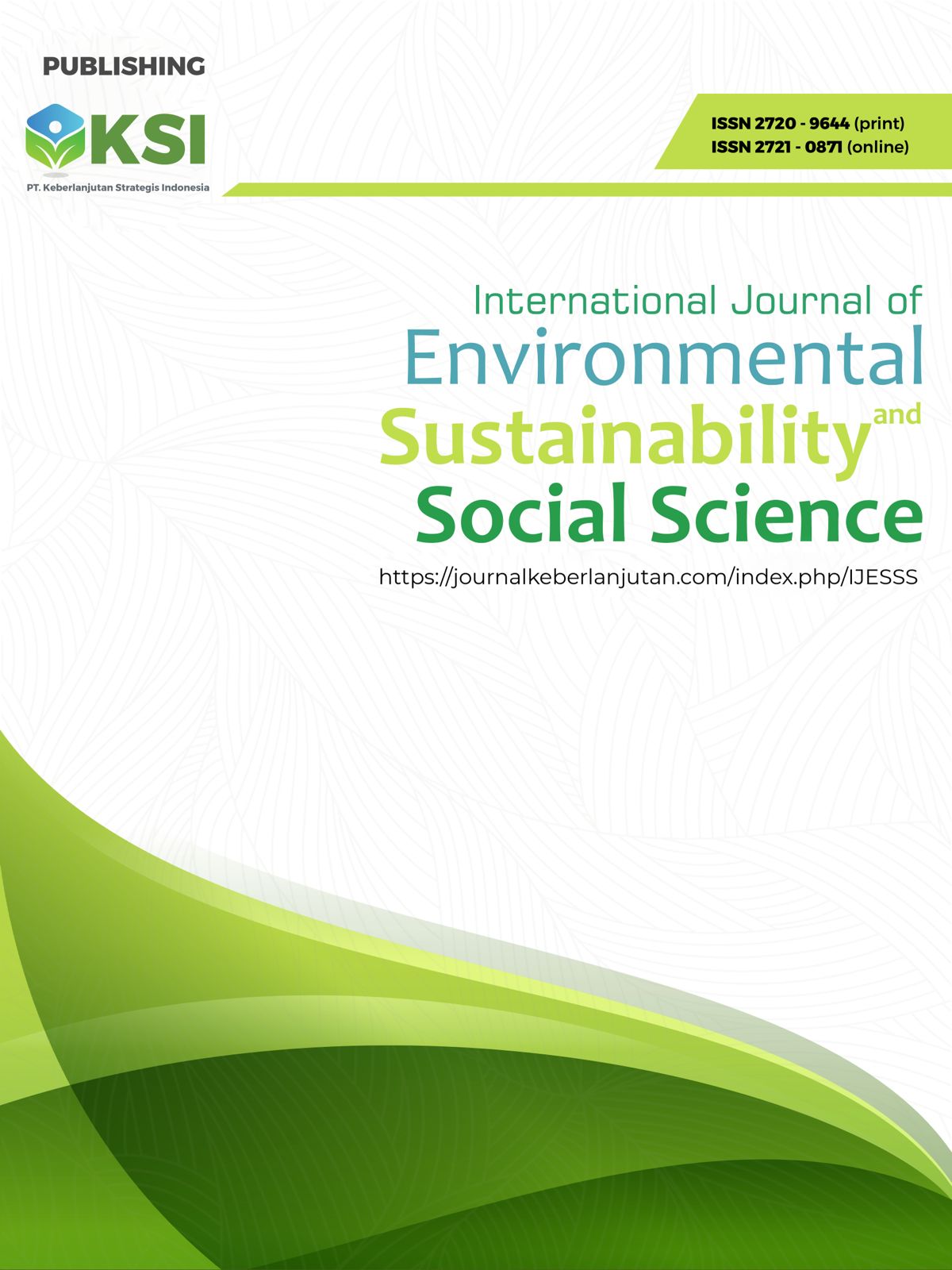Prediction of Financial Health of Selected Yes Banks Ltd Using X-Score Model
DOI:
https://doi.org/10.38142/ijesss.v6i2.1386Keywords:
Banking Sector, X-score, Financial Health, Financial Distress, Yes Bank LtdAbstract
In recent years, banks have increasingly encountered significant challenges, particularly related to financial irregularities, mismanagement, and fraud. This study aims to evaluate the economic health and financial performance of Yes Bank Ltd. over a ten-year period, from 2013–14 to 2022–23. The analysis is based on secondary data obtained from Capitaline and is conducted using Microsoft Excel and SPSS software. To assess the financial condition of the bank, the study applies the X-score model alongside simple linear regression techniques. The results reveal that while Yes Bank Ltd. remained financially stable during the majority of the observed years, it experienced financial distress in certain periods, which notably influenced the X-score outcomes. These fluctuations highlight vulnerabilities in the bank's financial structure during those years. It is important to note that the study is limited to one bank and a single predictive model. Therefore, future research is encouraged to expand the analysis by including multiple banks or industries and incorporating a variety of predictive tools and models to obtain more generalizable and robust insights.
Downloads
References
Anakpo, G., Xhate, Z., & Mishi, S. (2023). The Policies, Practices, and Challenges of Digital Financial Inclusion for Sustainable Development: The Case of the Developing Economy. FinTech, 2(2), 327-343. https://doi.org/10.3390/fintech2020019
Bajpai, N., & Biberman, J. (2020). The COVID-19 economy: Building a sustainable future in the shadow of a crisis (No. 33). ICT India Working Paper.
Cetorelli, N. (1999). Competitive analysis in banking: Appraisal of the methodologies. Economic perspectives-federal Reserve Bank of Chicago, 23, 2-15.
Chaudhary, K., & Sharma, M. (2011). Performance of Indian Public Sector Banks and Private Sector Banks: A Comparative Study. International Journal of Innovation, Management and Technology, 2(3), 249.
Doshi, V. (2013). Indian Financial System-Opportunities and Challenges for Banking Sector: An Assessment. PARIDNYA-The MIBM Research Journal, 1(1).
Fauzi, S. E., & Saluy, A. B. (2021). Comparative analysis of financial sustainability using the Altman Z-score, Springate, Zmijewski and Grover models for companies listed in the Indonesia stock exchange sub-sector telecommunication period 2014–2019. Journal of Economics and Business, 4(1). https://doi.org/10.31014/aior.1992.04.01.321
https://awsone.capitaline.com/index.html#/Company/Condensed/condensed?section=BalanceSheet
Jain, R. K., & Natarajan, R. (2011). Factors Influencing the Outsourcing Decisions: A Study of the Banking Sector in India. Strategic Outsourcing: An International Journal, 4(3), 294-322. https://doi.org/10.1108/17538291111185485
Joshi, P. V., & Bhalerao, M. J. (2011). Efficiency Evaluation of Banking Sector in India Based on Data Envelopment Analysis. Indian Journal of Commerce and Management Studies, 2(3), 31-42.
Kandpal, V. (2023). Dimensions of Financial Inclusion in India: A Qualitative Analysis of Banker Perspective. Qualitative Research in Financial Markets. https://doi.org/10.1108/QRFM-04-2022-0072
Karimzadeh, M., Jawed Akhtar, S. M., & Karimzadeh, B. (2013). Determinants of profitability of banking sector in India. Transition Studies Review, 20, 211-219. https://doi.org/10.1007/s11300-013-0284-4
Malini, A., & Menon, D. G. (2017, December). Technological innovations in the banking sector in India: An analysis. In 2017 International Conference on Technological Advancements in Power and Energy (TAP Energy) (pp. 1-5). IEEE. https://doi.org/10.1109/TAPENERGY.2017.8397342
Manalu, S., Octavianus, R. J. N., & Kalmadara, G. S. S. (2017). Financial Distress Analysis with Altman Z-Score Approach and Zmijewski X-Score on Shipping Service Company. Jurnal Aplikasi Manajemen, 15(4), 677-682. https://doi.org/10.21776/ub.jam.2017.015.04.15
Manikyam, K. R. (2014). Indian Banking Sector–Challenges and Opportunities. IOSR Journal of Business and Management, 16(2), 52-61. https://doi.org/10.9790/487X-16215261
Merton, R. C., & Bodie, Z. (1995). A Conceptual Framework for Analyzing the Financial System. The Global Financial System: A Functional Perspective, 3-31.
Pathak, B. V. (2014). Indian Financial System. Pearson Education India.
Srivastava, D. A. (2019). The Effectiveness of Prudential Regulations for Banks: Global Perspective and Indian Context. https://doi.org/10.2139/ssrn.3810552
Winarso, E., & Edison, T. A. (2019). Perbandingan Analisis Model Z”-Score Altman Modifikasi, Model X-Score Zmijewski, Model G-Score Grover, dan Model S-Score Springate Untuk Menganalisis Ketepatan Prediksi Kebangkrutan:(Studi Pada Perusahaan Manufaktur Sektor Industri Pelengkap Otomotif Yang Terdaftar di BEI periode 2016-2017). Journal of Accounting, Finance, Taxation, and Auditing (JAFTA), 1(2), 1-13. https://doi.org/10.28932/jafta.v1i2.2451
Zhang, X., Li, X., & Wang, R. (2009). Interpretation of the Binding Affinities of PTP1B Inhibitors with the MM-GB/SA Method and the X-Score Scoring Function. Journal of chemical information and modeling, 49(4), 1033-1048. https://doi.org/10.1021/ci8004429
Downloads
Published
Issue
Section
License
Copyright (c) 2025 Arshe AZAM

This work is licensed under a Creative Commons Attribution-NonCommercial 4.0 International License.
Creative Commons Attribution-NonCommercial 4.0 International License.



















